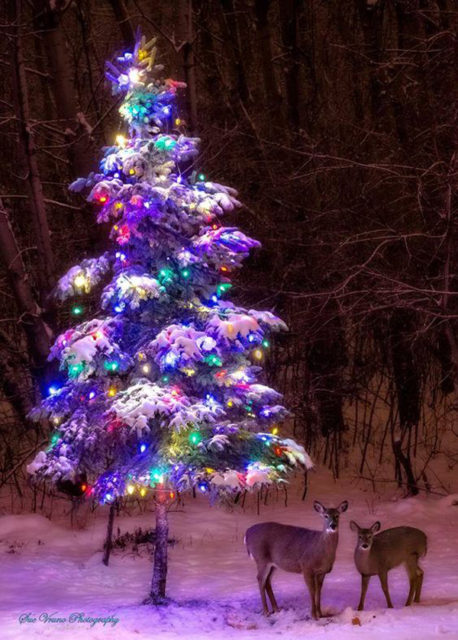The Tree of Life exists in all religions and cultural traditions from the Nordic Ygdrassil, to the Mayan and Aztec trees of life, to the bodhi tree under which Buddha Shakyamuni became enlightened.
The Zoroastrians of Persia worshipped the immortal Gaokerena tree, the ancient Egyptians an acacia tree which bore the primary god Osiris and his consort Isis. In Taoist China a tree of life contains a phoenix and a dragon, and bears a peach once every three thousand years which confers immortality.
The tradition in the West of the decorated Christmas tree is from the Germanic tradition of hanging evergreen boughs in the home, which are likely pagan rituals that predate Christianity.
In early European Christianity, Christmas trees were decorated with apples to represent the forbidden fruit of Adam and Eve in the green of paradise. The apples replaced with balls or baubles, and now are added lights, tinsel, candy, toys and other decorations of celebration. The star on top represents the star of Bethlehem, and an angel represents the angel Gabriel who announced to Mary her pregnancy.
The Christmas tree is always a delightful celebration of the season, particularly in the more Northern parts of the world where evergreen trees are native, and the dark season of Christmas welcomes a tree full of lights.
From an esoteric point of view we can remember the sacredness of the Tree of Life, whose spheres show the order, process, and method of creation. The Tree has its roots in divinity and unfolds into creation. We each have the Tree of Life within ourselves as our own internal Being, as we are a microcosm and the universe is the macrocosm.
The spheres of the tree of life are the virtues or fruits of the Being which we want to incarnate to illuminate our internal darkness. When we eliminate hate, fear, ignorance, then we incarnate little by little love, mercy, and wisdom. Let the light of your inner Being shine in the darkness to become an illuminated tree.


